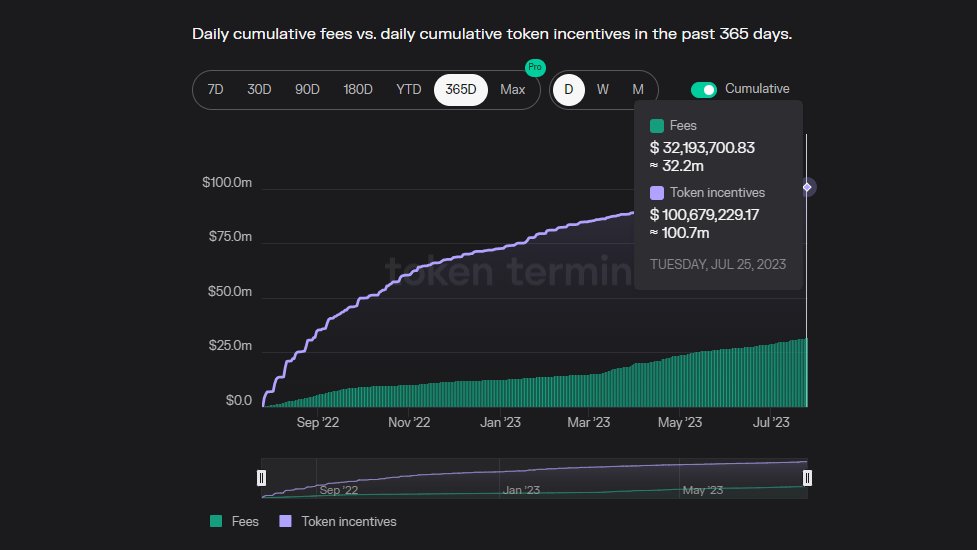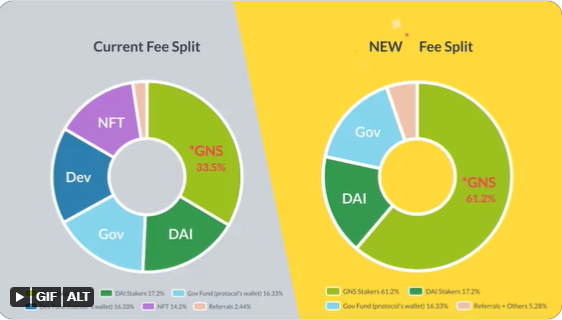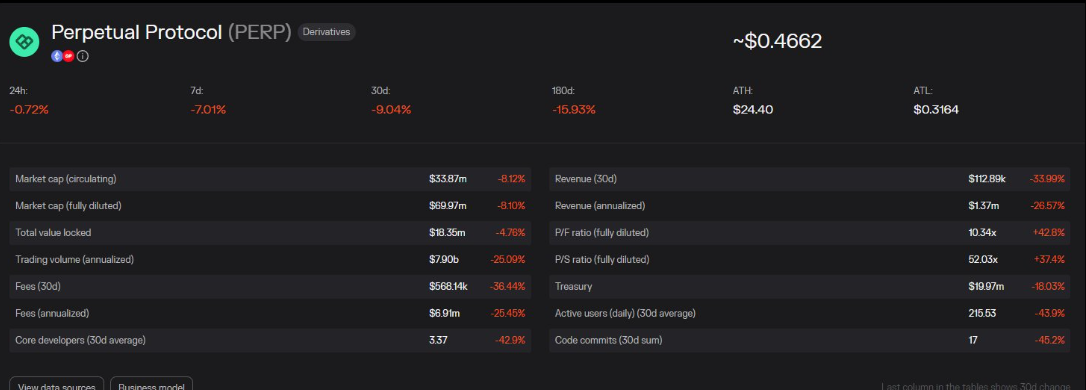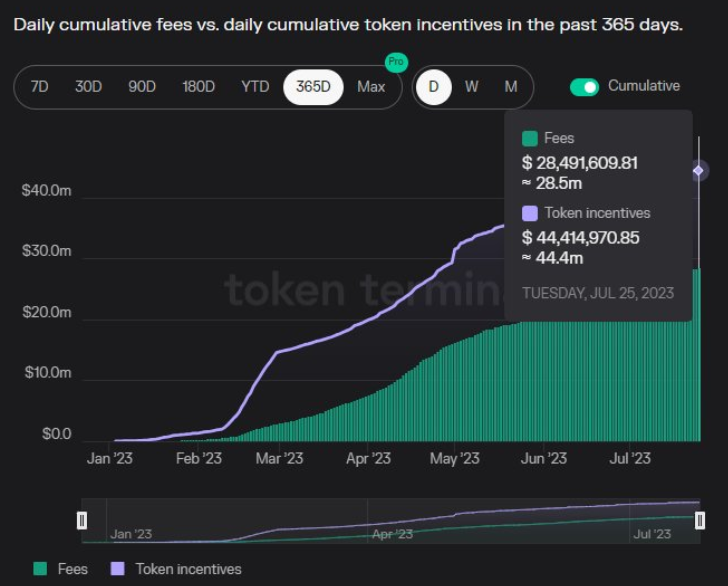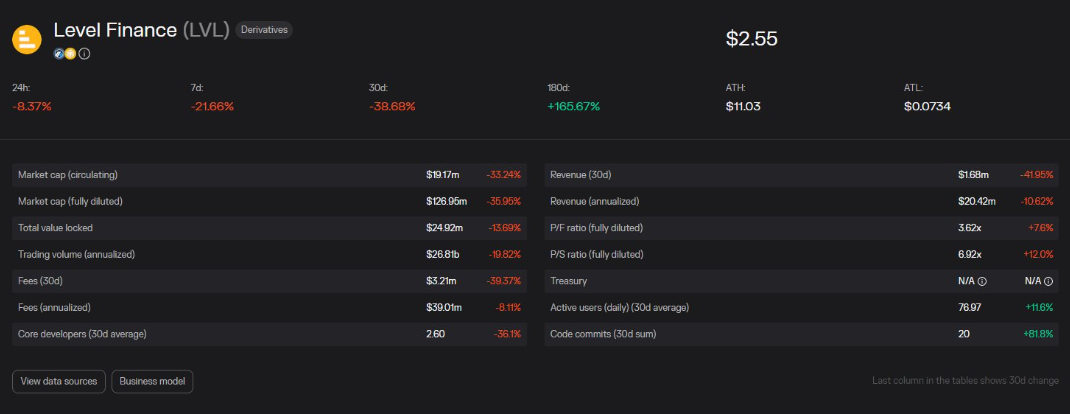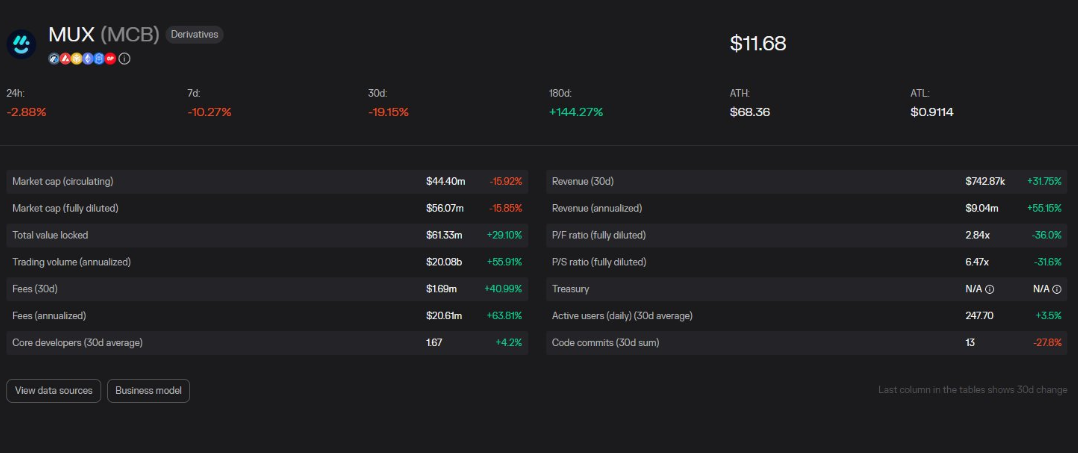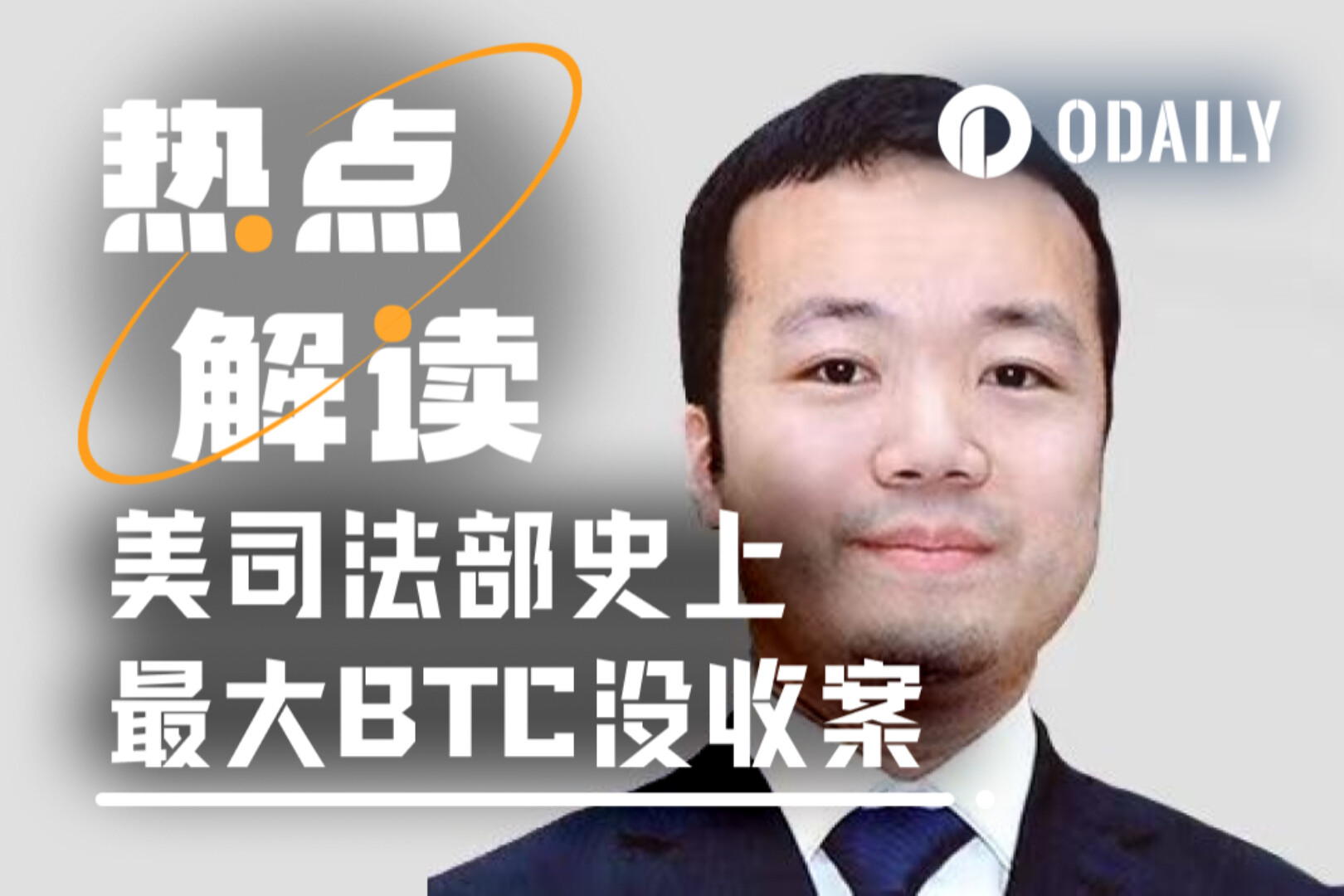Tác giả gốc:Tác giả gốc:
Nhà phân tích vốn của Alphabeth
Biên soạn gốc: Jordan, PANews
Lĩnh vực phái sinh on-chain là lĩnh vực cạnh tranh nhất trong DeFi, hàng chục giao thức đã được ra mắt và nhiều dự án mới sẽ sớm ra mắt. Bài viết này sẽ tập trung so sánh các chỉ số chính của 6 giao thức phái sinh on-chain chính .
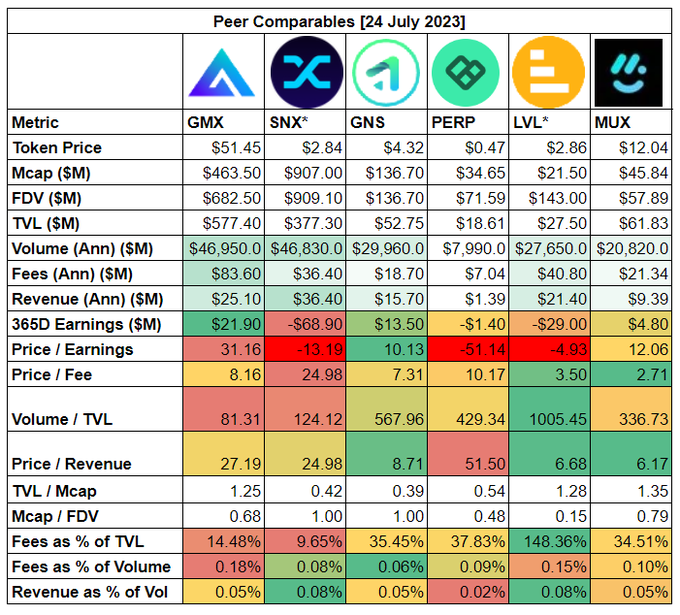
(Lưu ý: Dữ liệu trong bảng trên bị chặn vào ngày 24 tháng 7 năm 2023)
danh hiệu cấp một
1. GMX
GMX là một sàn giao dịch phi tập trung tổng hợp vĩnh viễn. Một trong những tính năng nổi tiếng nhất của nó là giao dịch không trượt giá. Đánh giá từ các chỉ số như khối lượng khóa, khối lượng giao dịch, phí và thu nhập, GMX có lẽ là thỏa thuận phái sinh lớn nhất hiện nay, họ chia sẻ 70% thu nhập từ phí với các nhà cung cấp thanh khoản và 30% với các nhà đầu tư GMX, khiến GMX trở nên rất phổ biến và hấp dẫn đối với các nhà đầu tư với tỷ lệ PE (doanh thu trừ đi ưu đãi mã thông báo) là 31,16, có nghĩa là GMX khá đắt, nhưng các nhà đầu tư có thể để định giá bằng GMX v2, sẽ có sẵn sau vài tuần nữa, với các tính năng sau:
Các oracle có độ trễ thấp của Chainlink cung cấp dữ liệu thị trường theo thời gian thực tốt hơn
Hỗ trợ nhiều tài sản hơn (không chỉ tiền điện tử)
phí giao dịch thấp hơn
Khi sự cạnh tranh ngày càng gay gắt, thị phần của GMX đang giảm dần. Nếu v2 không thể mang lại khối lượng giao dịch và phí nhiều hơn cho nền tảng, mức giá hợp lý của GMX có thể giảm xuống khoảng 40 USD, với tỷ lệ giá trên thu nhập khoảng 20.
danh hiệu cấp một
2. Tổng hợp
Synthetix cho phép người dùng đúc tài sản tổng hợp dựa trên mã thông báo gốc SNX của nó và các dự án khác như Kwenta có thể sử dụng Synthetix để xây dựng giao diện người dùng của riêng họ nhằm cho phép các nhà giao dịch truy cập các giao dịch DEX vĩnh viễn. Synthetix, giao thức lớn nhất trong số sáu giao thức phái sinh chính xét về cả vốn hóa thị trường và doanh thu, phân phối 100% thu nhập từ phí cho những người đặt cọc mã thông báo SNX, những người tự họ là nhà cung cấp thanh khoản.
SNX dường như là một token rất đắt ở mức định giá, phí và khối lượng phát hành token hiện tại. Nếu không có thêm ưu đãi, khối lượng giao dịch có thể giảm trong tương lai.
danh hiệu cấp một
3. Mạng lưới đạt được
Tỷ lệ giá trên thu nhập của Gains Network thấp nhất trong số sáu thỏa thuận phái sinh, chỉ 10 và tỷ lệ giá/thu nhập là 8,7, nhưng tỷ lệ khối lượng giao dịch/khối lượng bị khóa cao hơn trong điều kiện không có ưu đãi, đạt 568. Từ các chỉ số chính, phát triển sản phẩm và Từ góc độ cập nhật trong tương lai, GNS có thể là một dự án bị đánh giá thấp.
danh hiệu cấp một
4. Giao thức vĩnh viễn
danh hiệu cấp một
5. Cấp tài chính
Giao thức Level Finance đã sớm nhận được rất nhiều sự chú ý của thị trường do có số lượng lớn ưu đãi giao dịch sử dụng mã thông báo LVL. Hiện tại, khối lượng giao dịch của giao thức Level Finance vẫn được duy trì ở mức hàng tỷ đô la, nhưng do việc phát hành và giá token giảm, một số chỉ số chính đang có xu hướng giảm.
Thông tin chi tiết về dữ liệu: So sánh các chỉ số chính của 6 giao thức phái sinh trên chuỗi
danh hiệu cấp một
6. Giao thức MUX
Tóm tắt
Tóm tắt


